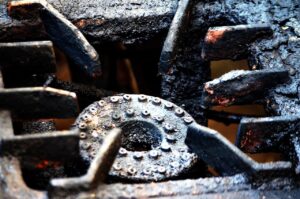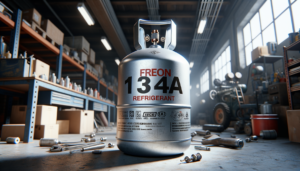A properly functioning dishwasher drain is essential for the efficient operation of your dishwasher. When the drain is clogged or not working properly, it can lead to standing water in the bottom of the dishwasher, water leaks, and even damage to your kitchen floor and cabinets. In this blog post, we will explore the common causes of dishwasher drainage problems, signs that indicate your dishwasher is not draining properly, and steps you can take to fix and prevent these issues.
Key Takeaways
- Dishwasher drainage issues can be frustrating and inconvenient.
- Common causes of dishwasher drainage problems include blockages, faulty drain pumps, and improper installation.
- Signs of a dishwasher that won’t drain include standing water in the bottom of the dishwasher and a foul odor.
- Checking for blockages in your dishwasher drain involves removing the filter and cleaning it, as well as checking the drain hose for kinks or clogs.
- Before calling a professional, try DIY solutions such as using a plunger or vinegar and baking soda to unclog the drain.
Common Causes of Dishwasher Drainage Problems
There are several common causes of dishwasher drainage problems. One of the most common causes is a clog in the drain hose or drain pump. Over time, food particles, grease, and other debris can accumulate in the drain hose and cause a blockage. Another common cause is a faulty drain pump. The drain pump is responsible for pumping out the water from the dishwasher, and if it is not working properly, the water will not be able to drain out. Additionally, a kinked or damaged drain hose can also prevent proper drainage.
Signs of a Dishwasher That Won’t Drain
There are several signs that indicate your dishwasher is not draining properly. One of the most obvious signs is standing water in the bottom of the dishwasher after a cycle has completed. If you notice that there is still water in the dishwasher after it has finished running, it is likely that there is a drainage issue. Another sign is water leaking from the dishwasher. If you notice water pooling around the base of your dishwasher or dripping from underneath, it could be a sign that the water is not draining properly.
How to Check for Blockages in Your Dishwasher Drain
If you suspect that there may be a blockage in your dishwasher drain, there are several steps you can take to check for and remove any obstructions. The first step is to remove the dishwasher filter. The filter is located at the bottom of the dishwasher and can be easily removed by twisting it counterclockwise. Once the filter is removed, check for any debris or food particles that may be blocking the drain. Use a soft brush or cloth to clean the filter and remove any debris.
Next, check the drain hose for any kinks or clogs. The drain hose is usually located at the back of the dishwasher and connects to the sink drain or garbage disposal. If you notice any kinks in the hose, straighten them out to allow for proper drainage. If you suspect there may be a clog in the hose, you can use a plumber’s snake or a wire hanger to try and remove the obstruction. Insert the snake or hanger into the hose and gently push it through to dislodge any clogs.
Steps to Take Before Calling a Professional
Before calling a professional to fix your dishwasher drainage issues, there are several troubleshooting steps you can take. First, try resetting your dishwasher. This can be done by turning off the power to the dishwasher at the circuit breaker for a few minutes and then turning it back on. Sometimes, a simple reset can fix minor issues with the dishwasher.
Another step you can take is to check your garbage disposal if you have one. Sometimes, a clog in the garbage disposal can cause water to back up into the dishwasher. Run your garbage disposal to ensure that it is working properly and clear any clogs that may be present.
DIY Solutions for a Dishwasher That Won’t Drain

If you have determined that there is a blockage in your dishwasher drain, there are several DIY solutions you can try before calling a professional. One of the most effective methods is to use a mixture of vinegar and baking soda to unclog the drain. Start by pouring one cup of vinegar into the bottom of your dishwasher and let it sit for about 15 minutes. Then, sprinkle one cup of baking soda over the vinegar and let it sit for another 15 minutes. Finally, pour boiling water into the dishwasher to flush out the drain.
If the vinegar and baking soda method does not work, you can try using a plunger to unclog the drain. Fill the sink with enough water to cover the plunger and place it over the drain opening in the dishwasher. Push and pull on the plunger vigorously to create suction and dislodge any clogs. Repeat this process several times until the water begins to drain properly.
How to Clean Your Dishwasher Drain
Cleaning your dishwasher drain regularly can help prevent future drainage issues. One of the easiest ways to clean your dishwasher drain is to use vinegar and baking soda. Start by removing any debris or food particles from the dishwasher filter and drain. Then, pour one cup of vinegar into a dishwasher-safe bowl or cup and place it on the top rack of your dishwasher. Sprinkle one cup of baking soda over the bottom of the dishwasher. Run a hot water cycle to allow the vinegar and baking soda to clean and deodorize your dishwasher.
Another option is to use a commercial dishwasher cleaner. These cleaners are specifically designed to remove grease, grime, and odors from your dishwasher. Follow the instructions on the cleaner’s packaging for best results.
Replacing a Faulty Dishwasher Drain Pump
If you have determined that your dishwasher drain pump is faulty and needs to be replaced, you can do so yourself with a few simple steps. Before starting, make sure to turn off the power to your dishwasher at the circuit breaker. Then, remove the bottom panel of your dishwasher to access the drain pump. Disconnect the wires from the pump and remove any screws or clamps that are holding it in place. Install the new drain pump by reversing these steps and make sure all connections are secure. Finally, turn the power back on and test the dishwasher to ensure that the new drain pump is working properly.
Preventing Future Dishwasher Drainage Problems
To prevent future dishwasher drainage problems, there are several steps you can take. First, make sure to scrape off any excess food from your dishes before loading them into the dishwasher. This will help prevent food particles from clogging the drain. Additionally, avoid putting large or bulky items in the dishwasher that can block the drain or cause it to become kinked.
Regularly cleaning your dishwasher and drain is also important for preventing future issues. Remove and clean the dishwasher filter at least once a month to remove any debris or food particles. Run a hot water cycle with vinegar and baking soda or a commercial dishwasher cleaner every few months to keep your dishwasher clean and odor-free.
Final Thoughts and Additional Resources for Troubleshooting
In conclusion, a properly functioning dishwasher drain is essential for the efficient operation of your dishwasher. By understanding the common causes of dishwasher drainage problems, signs that indicate your dishwasher is not draining properly, and steps you can take to fix and prevent these issues, you can ensure that your dishwasher continues to work effectively.
If you are unable to fix your dishwasher drainage issues on your own, there are several additional resources available for troubleshooting. Many manufacturers have websites with troubleshooting guides and FAQs that can help you diagnose and fix common dishwasher problems. Additionally, there are appliance repair services that specialize in fixing dishwashers and can provide professional assistance if needed.
Remember, taking care of your dishwasher and addressing drainage issues promptly can help extend the lifespan of your appliance and save you money on costly repairs in the long run.
If you’re dealing with a dishwasher that won’t drain, troubleshooting the issue can be frustrating. However, there are several common causes and solutions that you can try before calling a professional. In a related article from 911 Appliance Repair, they provide helpful tips and step-by-step instructions to help you diagnose and fix the problem. From checking the drain hose to inspecting the pump and filter, this article covers all the essential troubleshooting steps. To learn more about troubleshooting a dishwasher that won’t drain, check out their informative article here.
Can a Dishwasher Not Cleaning Well Also Lead to Drainage Issues?
If you are troubleshooting dishwasher not cleaning well, it could potentially lead to drainage issues. If the dishwasher is not effectively cleaning dishes, food particles could clog the drainage system, causing drainage problems. It’s crucial to address any cleaning issues to prevent further drainage complications.



